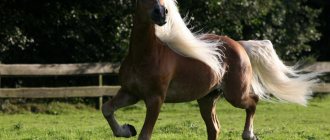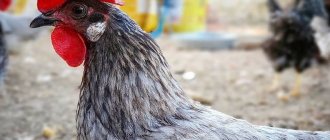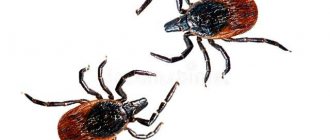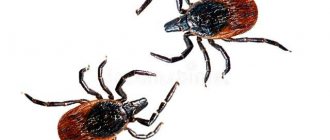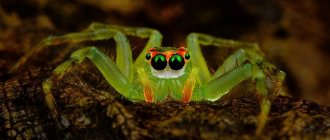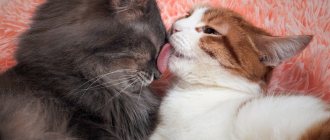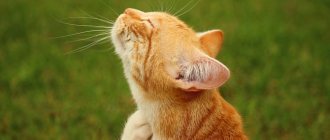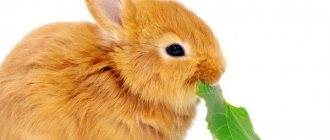It’s no secret to any equestrian that a beautiful hairstyle can ennoble any horse, regardless of the breed. Since ancient times, it has been customary for horses to have their manes and tails braided for the holidays; nowadays, horses’ hairstyles are done for competitions, exhibitions, shows, and simply, if desired, to give the pet an elegant look.
One of the most common competition hairstyles is the bobblehead or rosette hairstyle. It completely opens the horse's neck and looks very elegant, but at the same time this hairstyle is also one of the most labor-intensive. So, be patient and don’t be discouraged if you don’t succeed the first time, as they say, “patience and work...”
Preparation of the workplace
First, we need to prepare to braid your horse's mane. In order for the horse to stand still, it must be tied. It’s a good idea to stock up on food, because the horse will soon get bored of standing in one place and it will start spinning, which can negatively affect the aesthetics of its hairstyle.
Obviously, the place where the horse will stand and you will braid the mane must be sufficiently lit, it is advisable to sweep the floor - it is easier to look for fallen objects on a clean floor. If your horse is tall enough, place a chair. Wear an apron with a pocket - it will be easier to get rubber bands; if you don’t have an apron, it doesn’t matter, just put them next to each other.
Horsehair and its uses
Besides giving your horse a nice haircut, you might be surprised to learn that horsehair can be used in a variety of ways. The amazingly thick and durable horsehair, taken from the mane and tail, can be a great help in our daily lives.
So, what is horsehair used for?
- Tail strings are used for stringed instruments such as violin, viola and cello. In the old days, people used hair from the mane of horses to fill their sofas.
- These days, horsehair is sometimes used as mattress filling.
- Various brushes are made from horsehair. These include hair, paint, teeth and shaving brushes, as well as shoe polish brushes.
- In the 16th century people made wigs from horsehair. In the 18th century, judges wore horsehair wigs in their courtrooms.
- In the 19th century, people used horsehair to create durable fabrics. Some factories still use horsehair to make upholstery.
Preparing the mane
Now let's prepare the mane. If the mane is dirty, it should be washed with shampoo, but not with conditioner, otherwise it will be slippery. You need to comb it thoroughly on one side, trim it and thin it out slightly. Don't get too carried away with thinning your mane. It is advisable to slightly moisten it - this way the strands will not become shaggy.
There are several ways to weave rosettes for a horse; to choose the most suitable method, you need to consider what competitions you are going to. Do not braid the mane too tightly, otherwise it will cause discomfort to your horse, which can negatively affect the course of the competition. If you are traveling close to a performance, you can use rubber bands when weaving; if you have a competition coming up for several days, then it is better to fix the bumps with a thread, a needle and an adhesive plaster. You can additionally fix the mane using a special varnish or sugar water.
A mane from 12 to 15 cm long is considered ideal for rosettes. It's okay if your four-legged friend's mane doesn't fit into this standard.
We divide the mane into equal strands, usually from 11 to 17, and tie ponytails located at equal distances with elastic bands. As you may have guessed, the number of tails will correspond to the number of sockets. Please note that too many rosettes on a horse will look sloppy, and if there are not enough of them, the hairstyle will quickly fall apart. Start at the back of the head and continue down to the withers.
There are several ways to weave rosettes for a horse; to choose the most suitable method, you need to consider what competitions you are going to.
Circus horse
The equestrian mane of a circus horse requires special care, since in the arena the animal must shine, attracting admiring glances from the public. For circus horses, complex weaving is usually chosen using various accessories, such as bright ribbons with rhinestones or bells. A well-known attribute of a circus horse is a “plume” of colored feathers, attached between the horse’s ears. Hairstyles for horses with long manes are often used, such as Western, Arabic mesh, and all kinds of cascading weaves.
Arabic weaving "mesh"
Loose styling with ribbon embellishments
Arabic mesh weaving looks very impressive. To create it, you need to divide the mane into equal strands. Secure at the base with rubber bands. Divide each strand in half and at a distance of 7-10 cm, connect each half of the strand with the adjacent half. Do this, row by row, to the desired length. A loose style looks great on a long mane. To create it, you need to use hair gels and other styling products. But, unfortunately, this hairstyle is not durable. The mane quickly becomes disheveled and loses its neatness. Most often, loose styling is used for photo shoots and video shooting.
Weaving method using rubber bands
For training, it’s easier to take bright elastic bands, but if you are already preparing for a competition, the elastic bands should match the color of your mane.
Now we braid the first braid. We also start braiding from the top. It is not necessary to braid a regular braid; if you wish, you can braid it in a French braid.
While braiding, pull the braid down and not towards you, so it will immediately lie in the right direction.
We bend the braid inward, under itself, and if the mane is long, then it is better to fold it in half again. We fix the resulting lump with an elastic band or adhesive tape. We continue this way until we have braided the entire mane.
This weaving method is suitable for traveling to “home” competitions. This method is better suited for short manes.
Hoof care
Hooves are cleaned before or after basic grooming, there is no fundamental difference. Some people believe that starting with the hooves will make it easier to notice if the horse is lame. Particular attention should be paid to this part after walking on small gravel, stones, sand, which often gets stuck and causes inconvenience.
To care for your horse's hooves you will need:
- hook;
- brushes.
They begin to clean the hooves from the heel, moving along the edge of the front wall. Even though the end of the hook is blunt, it should not be used to clean off dirt in the V-shaped area (arrow). This is a very sensitive part that is brushed with extreme care. If you don't care for your hooves properly, they can become inflamed and even deformed.
For the outside of the hoof, you can use a coarser baleen brush. The same brush should be used to remove dried dirt from the bedding from the legs and rump. When the air temperature is not lower than 0, you can wash your hooves with foamy water and then wipe them dry.
In summer, other “cosmetic” procedures are also possible. For example, if the outer part (horn) begins to dry out and crack, you can wrap the hooves with damp rags, or even better, keep the horse in a stall with clay diluted with water on the floor for several days. After the procedure, it is necessary to lubricate the horn with Vaseline so that the moisture does not evaporate for as long as possible.
From time to time the horn should be filed, giving the hooves the correct beautiful shape.
Weaving method using yarn
For this method you will need:
- strong thread or yarn, for training you can use a bright color, but for competitions, of course, the thread should match the color of the mane
- metal loop - can be made from a hairpin or wire
If the mane is a little dry, wet it again.
We braid the braid, weave it to about the middle and weave a thread into the braid. After the braid is ready, secure its end with woven thread. Then we thread a loop through both ends of the rope/thread. We sew using this loop like a needle - we thread it into the base of the pigtail - it is folded in half (inward) - we should get a braid folded in half with the end of the rope threaded into its own base. After this, we pass through the top of the braid folded in half and thread the rope through the base of the braid. Gently tighten - we get a lump. Now all that remains is to fasten the thread and trim off the excess ends.
How to build a chicken pen with your own hands
When building a pen, the following factors are taken into account:
- Number and age of young animals.
- Material used.
- Safety of chicks.
- Livestock breed, since each variety has its own size and development rate. For example, meat chickens grow faster than egg chickens. At the same time, they are less active and somewhat slow.
When building a run, you need to take into account the number of chickens.
When building a pen, you need to choose durable materials that are resistant to physical impact. This will protect the chickens from predators entering the enclosure. It is also necessary to take into account that there are no protruding nails or sharp parts, as they are dangerous for the chicks.
What you will need for construction:
- 8 wooden boards (4 x 1500 mm, 4 x 1000 mm).
- 4 bars 20 mm thick.
- Screws or self-tapping screws.
- Mesh or durable textiles.
- Slate sheet (this will serve as a roof).
- Hammer and nails (they can be replaced with a construction stapler).
Instructions for building a pen:
- Using self-tapping screws, fasten the boards together. This creates a box that acts as a frame. The bars set the height of the pen.
- Make a board fence on the north side to protect the chicks from drafts and wind.
- Cover the pen on the sunny side with netting. To prevent the fabric or mesh from sagging, stuff it onto a frame of wooden slats.
- The roof of the enclosure is made of mesh and slate sheets. The slate will protect the chicks in bad weather, and the mesh will create a “lace shadow” in sunny weather. Slate is also suitable for making gates.
The frame of the enclosure is made of a block, and the top is covered with fabric or mesh.
You can also set up a mobile enclosure - it can be moved from place to place. The area is calculated as follows: for 30 individuals – 1 m2. Cover the frame with a mesh with 15 x 15 mm cells. In addition, it is necessary to provide a folding door to make it convenient to give food to the birds and change the water in the drinking bowl.
Tips for arranging an enclosure or paddock
When setting up a pen or enclosure for chickens, follow the rules:
It is important that the pen or enclosure for chickens is placed in an area protected from drafts. Otherwise, the chicks may get sick
Watch the kids: if they huddle together and squeak loudly, it means they are cold. Excess sun is harmful to young animals as well as excessive cold, so you need to shade part of the area with a piece of plywood or slate. In hot weather, kids can hide in the shade. You should not release fledgling chicks into the rain and wind, as the chicks will quickly get wet and catch a cold. Under no circumstances leave the enclosure open, even in favorable weather. Birds of prey will instantly notice your mistake and peck the chickens. Such cunning predators as magpies can wait for several days, lying in wait for the moment when the babies are left unattended in an open room.
As you can see, walking chickens in the fresh air is an objective necessity. And you need to take care of the convenience and safety of the birds in advance. A comfortable pen or enclosure will help you keep your livestock strong and healthy.
In the video you can see chickens walking outside in a fenced enclosure.
Weaving method using a needle and thread
For this method you will need pieces of thread approximately 25 - 30 cm.
We thread the needle and weave the thread into the braid so that the needle remains dangling at the bottom. It is not recommended to tighten the braid at the base. After you finish braiding the braid, secure the tip with a needle, and bend the tip of the braid inward, with the thread and needle still sticking out of the braid. Now take a needle and thread it through the base of the braid, folding the braid in half. We make a few stitches. If necessary, you can fold the braid in half again. Then we fix the thread and cut it.
Weaving with a needle and thread
So, we have discussed several ways of braiding cone rosettes, we recommend you try them all. However, remember - you need to braid the braids with the same tension - otherwise they will look different. The tighter the socket is, the longer it will last.
Sports horse
There are several options for how to braid a horse's mane for sporting events. It is very important here that the mane does not interfere with work and at the same time reveals the beautiful muscular neck of the animal. The ideal option would be rosette weaving. To do this, you need to divide your mane into equal strands and secure them at the base with an elastic band or cord. Weave a tight braid from each strand, then roll it into a cone, hiding the ends. Stitch the resulting ball with a needle with a blunt end to securely secure the hairstyle.
Weaving with cords
Tight “spikelet” with pom-poms
All kinds of weaving using colored cords, pompoms and other decorations are also suitable for sports horses.
Styling secrets
We have already talked about the practicality and non-pretentiousness of such men's styling. There is a huge field for experimentation here.
But there are also some nuances:
- styling requires the right base - clean and dry curls. In addition, it is important to constantly visit a specialist to remove excess length and split ends;
- It is important to avoid using a hair dryer. Hot air dries and takes away shine. This is especially true for long men's curls. Advice: if you can’t do without a hairdryer, you must definitely use heat-protective compounds designed for men’s hair;
- styling products are great helpers in men's styling. They should be specialized and selected for the occasion - mousse and foam for volume, gel or wax for smoothness and texture, varnish for final fixation. It is important to use the compositions sparingly, otherwise you can achieve the opposite effect - making the curls heavier or greasy.
Important: stylists advise avoiding too low buns in men's hair styling or bright, massive accessories for fixation. Such options will look too feminine. While the male tail is a symbol of brutality and rebellion.
Skin care
Horses spend a significant part of the day grooming their skin, which is absolutely necessary for their well-being, and this behavior is called comfortable behavior. The skin is not only a protective shell covering the entire body, it is an active organ that performs many important functions; it contains the organs of touch, heat and cold receptors.
Horses need a healthy, well-functioning coat. No one cleans wild odd-toed ungulates, and they have developed a relatively complex and, above all, pronounced comfortable behavior, allowing them to independently care for themselves and maintain their skin and hair in order.
So, felting is typical for a horse when taking care of its skin on its own. Well-cleaned horses, to the great regret of their owners, often have an absolute need to have a good lie down, since in some horses this is precisely what cleaning prompts, and all human efforts to give the animal a well-groomed, neat appearance come to naught. Although horses can roll on any surface that is not too hard, as a rule, they look for special, special soil and prefer dusty areas to all others. Not only wild equids allow themselves to take a dust bath in the hot afternoon hours, when the dust is the driest, in order to then properly shake off their well-powdered fur. In dry areas you can find such places for taking dust baths for most horses living in a combined stall-walking environment. Horses themselves create such areas, eating up the growing grass, so that, often using such an area, they can create dusty coolness in the pasture.
Such baths help smooth hair that is too greasy and sticky with sweat, natural dew or rain and does not lie in its natural direction relative to the body. Horses bring them in this way to their original state. In stalled horses, loose skin particles produced by brushing with a stiff brush can have a similar effect. But subsequent final smoothing with a smoothing iron leads to an unphysiologically smooth and shiny appearance, and as a result – gluing of the top coat hair.
To lie down, horses lie down in the usual way, having first carefully examined the chosen place. Their intentions are easily recognized even by a relatively inexperienced observer, as the animals' behavior is immediately noticeable. They carefully examine and sniff the chosen place, lowering their head to the ground and raising their tail horizontally, ears directed forward, and before starting to wallow, they once again walk around the chosen place in small steps, making more or less feverish digging movements with their front legs. After the animal lies down, it presses its head and neck to the ground in order to rub the underlying half of the muzzle and, above all, the cheeks, which they sometimes literally bury in the ground. After careful treatment of one half of the body, many horses turn over to the other side in one fell swoop, and especially flexible animals turn over several times. Some return to a semi-recumbent position to rest their front hooves on the ground one more time before beginning to felt again.
Who is the hairstyle suitable for?
Unusual haircuts are a way of self-expression. Any man can grow long locks and a beard, regardless of age. They are comfortable to wear every day; all you have to do is learn how to style them correctly.
Haircuts and styling in the original Viking style are especially suitable for:
- during the reconstruction of the era of medieval Scandinavia;
- owners of thick and voluminous hair of any shade;
- men with a strong physique and rough features.
To understand whether the image is suitable, you can use applications on your smartphone. Just upload a photo, choose color and styling. This will save time on growing the appropriate length of strands and caring for them, as well as the cost of stylist services.
Frequently Asked Questions About Viking Hairstyles
Are there any secrets to growing long hair?
Hair takes time to grow! The key is to reduce your stress levels by drinking plenty of water and eating a healthy diet. How you treat yourself has a huge impact on how your hair will look. If the body is under stress, hair growth stops.
How to make your beard thicker?
To tame your hair, it is recommended to use a beard comb that is not made of plastic. A wide-tooth comb will separate the hairs perfectly. Start at the bottom of the beard and work your way up and down, this will provide the look of a "fuller" and tougher beard. You can also use beard oil to enhance your look. When it comes to hair products, it's all about personal preference, and experimentation is key.
